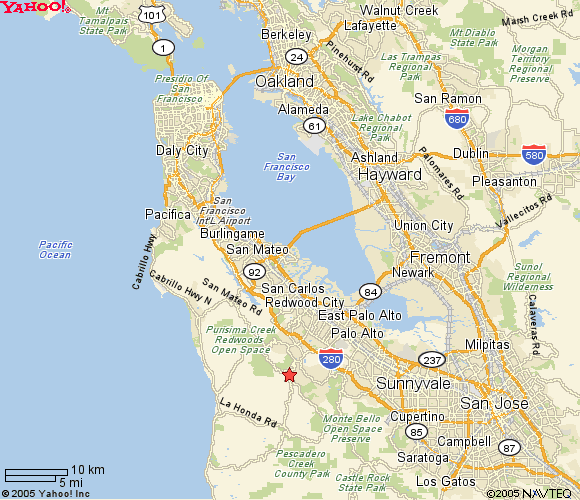
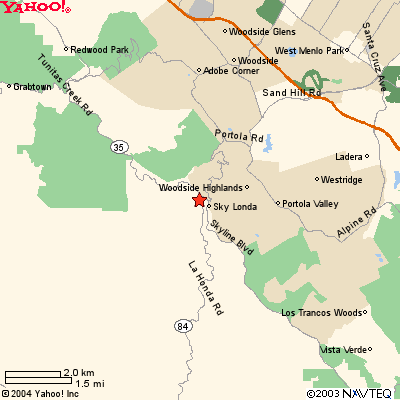
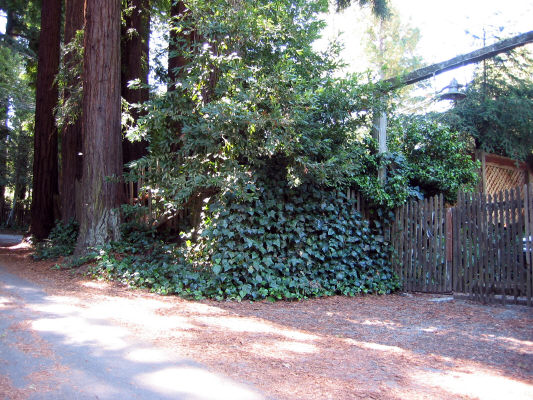
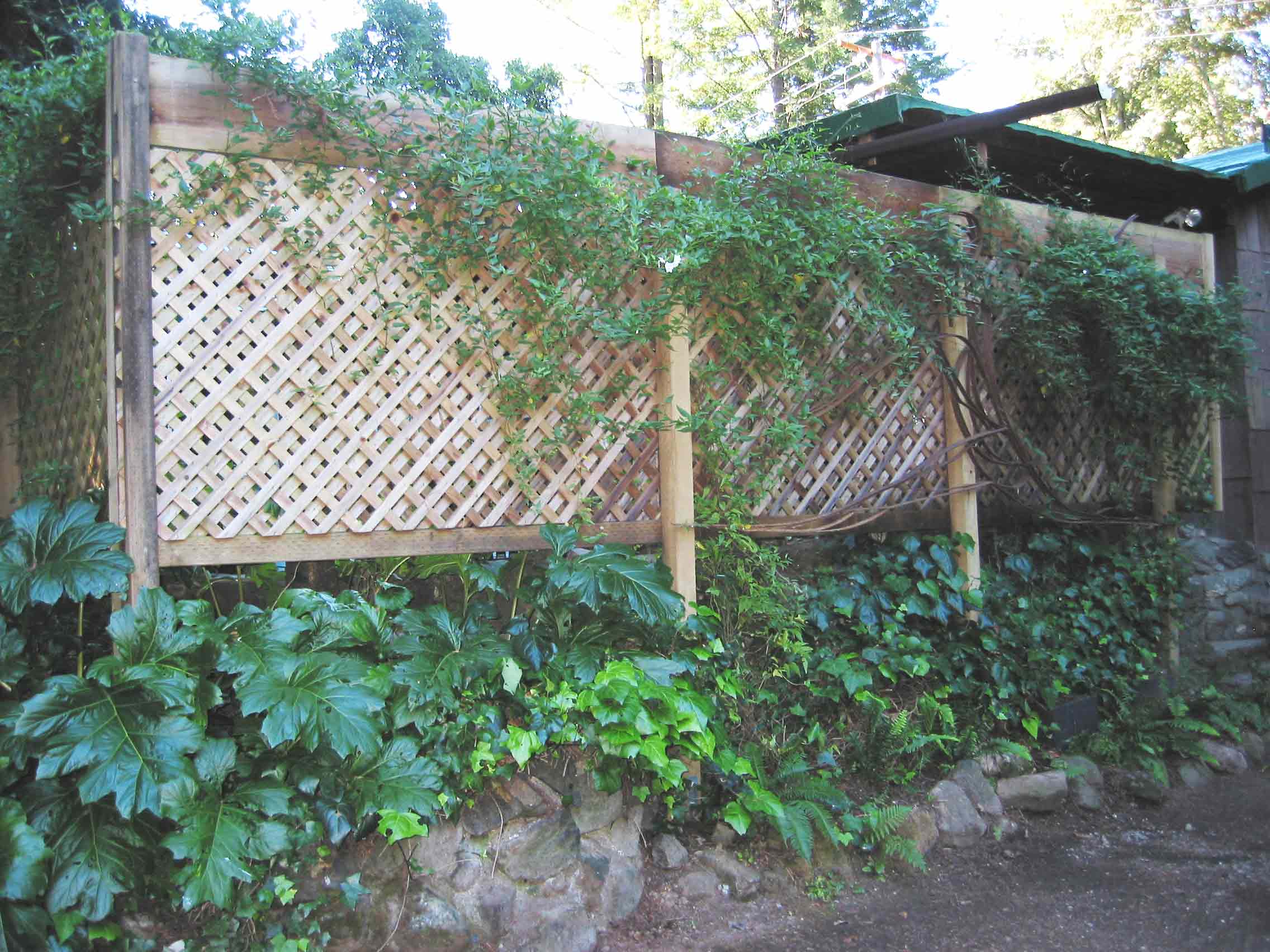
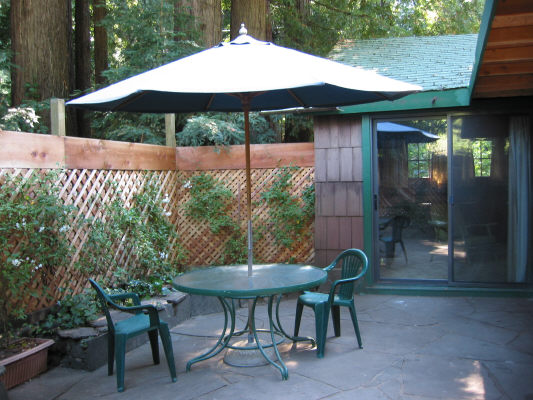
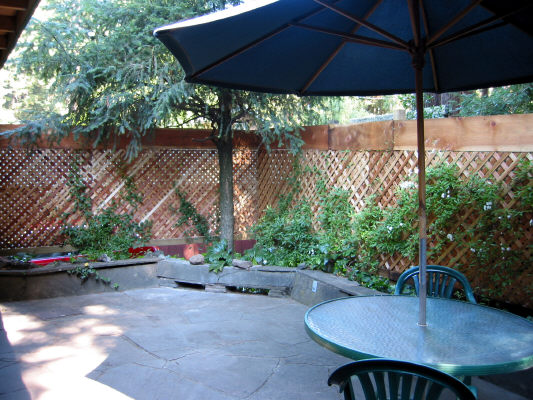
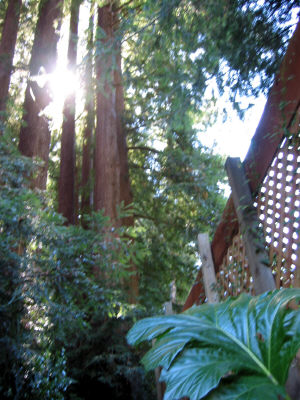
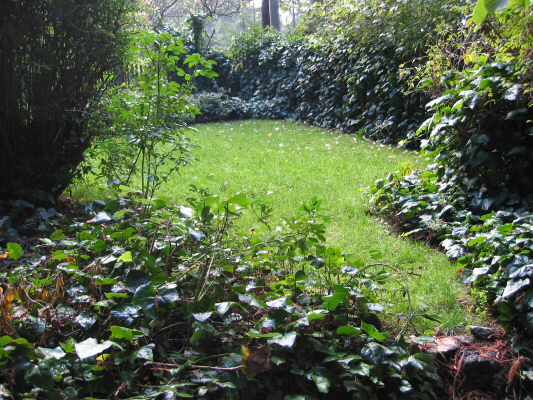
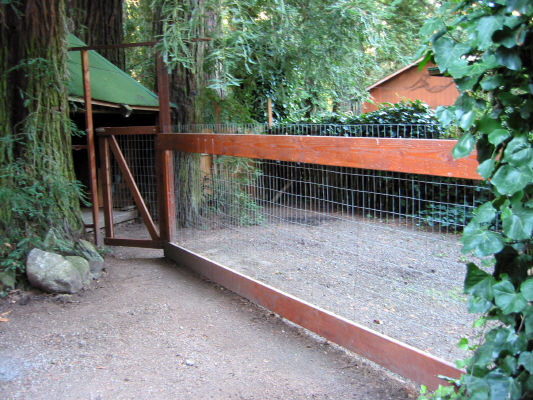
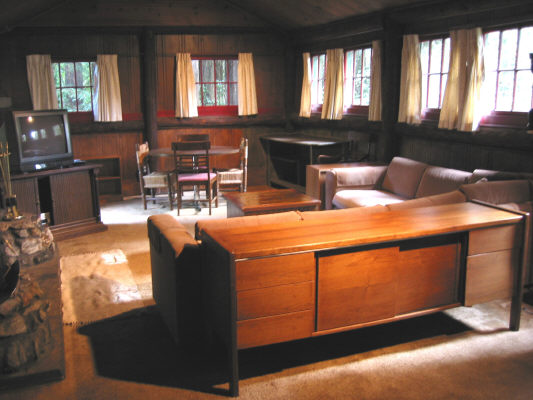

Furnished two-bedroom cottage (including furnished two-person office) on flat lot in quiet rural area behind Stanford (in Skylonda area, just off Skyline Boulevard at 1500' elevation at junction of Hwys 35 and 84) with fenced yard, dog run/shelter, recessed on-street parking available for two (reasonably) compact vehicles. Fully furnished with living room (fireplace), dining room, kitchen, bathroom, two bedrooms, two-desk office, washer/dryer, private enclosed patio, and small shed (storage for light items). NON-SMOKING only (inside or outside, tenants or guests), one or two pets OK. One-month minimum stay at $3600/month INCLUDING ALL FURNISHINGS AND UTILITIES ($3600/month = $3200/month rent + $400/month for furnishings, gas, electricity, water, recycling/garbage pickup, Comcast Business Internet, and yard maintenance). For list of furnishings see PDF Inventory For sample rental agreement, see Guidelines One-time security/cleaning deposit of $1000 required.
The cottage is intended to provide a "niche service" as a combined living/office arrangement rented on a month-to-month basis. Past tenants have included a one-man electronic design office, a two-person accounting business, a two-person contractors' office for large-scale construction work being done in the Skyline area, an electrical contractor working on the recent Stanford Hospital addition, various Stanford Hospital residents/doctors, a visiting physicist at Stanford doing research on the "abundance of light elements in the early Universe", a deep-sea diver working as a consultant on the Hetch/Hetchy-sourced Crystal Springs Reservoir dam, various European "entrepreneurs" exploring business opportunities in Silicon Valley, several free-lance writers, a newspaper reporter doing research/interviews as part of an extended assignment, and (most recently) two out-of-state university professors on Sabbatical. The rental is specifically oriented towards one or two individuals working remotely out of an in-home office (see "Questions Often Asked" below).
PLEASE NOTE THE FOLLOWING:
Rental is suitable for one or two individuals only
Cottage is rented only as "furnished with pre-paid utilities" as described above
Internet speed is 160mbps-down/40mbps-up (works well for two-person office/tech usage, but not intense gaming)
No smoking/vaping/drugs (cause for immediate notice)
Monthly renewal (non-lease with 30-day notice from either side)
Due to our location close to Stanford, tenancies tend to align wth the academic year
Current availability is Fall 2024 (exact dates TBD by current residents -- the usual arrangement)
----------------------------------------------------------------------------------------------------------------------------------------------------------------------------------------------------------------------------
Because tenants from out of town will not have seen the property prior to arrival (as well as due to complications in showing property during the still on-going Coronavirus pandemic), we have included a group of photos showing both the outside and inside of the cottage and yard. Click on each small image below to enlarge ...










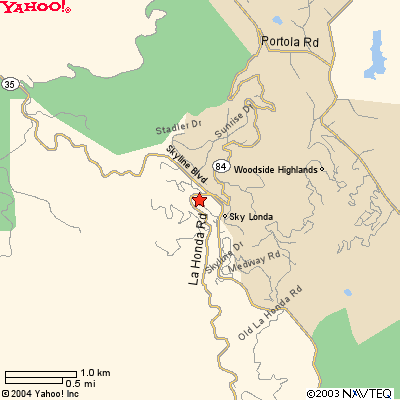
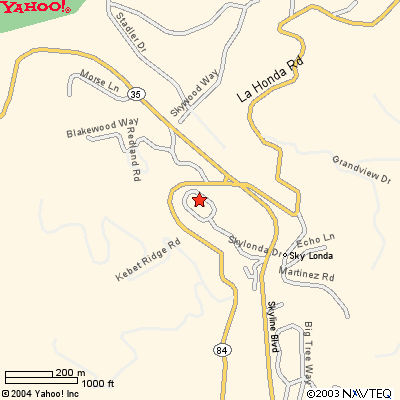
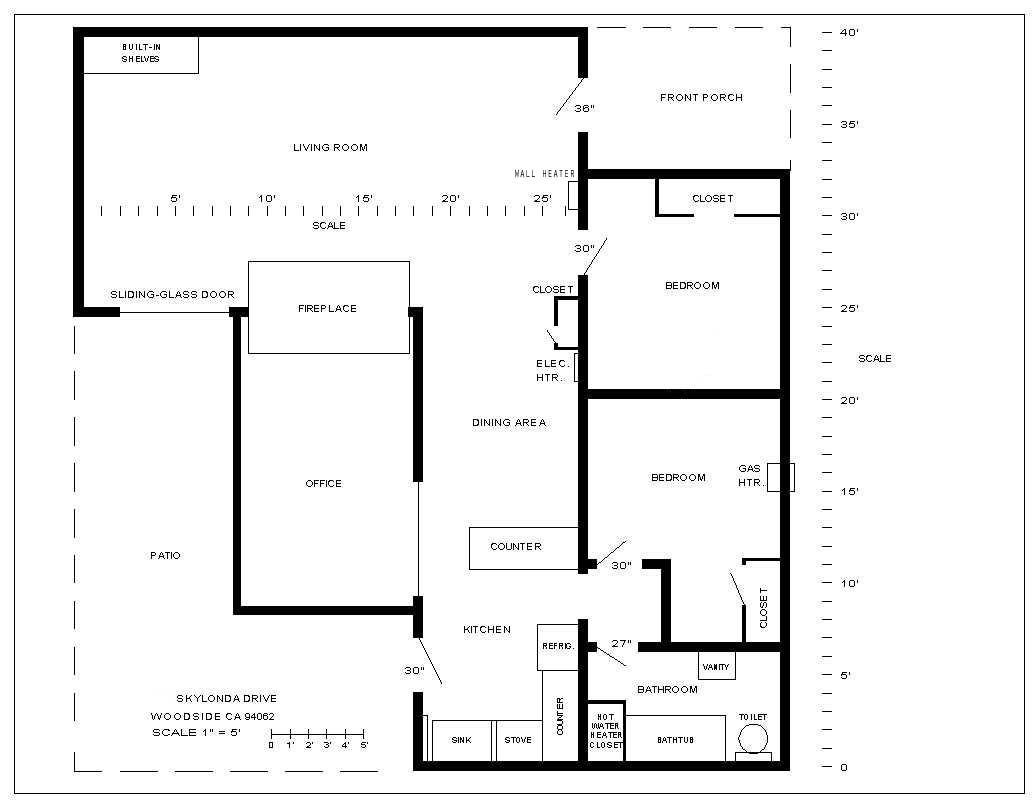
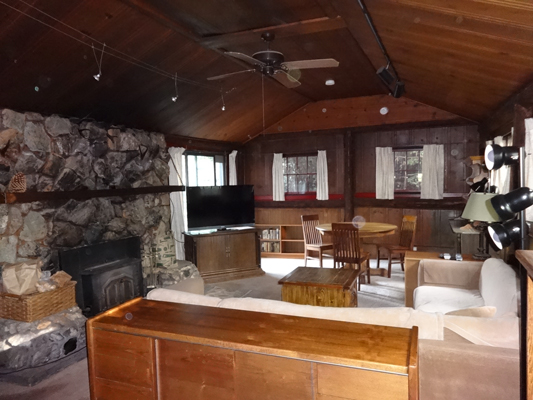
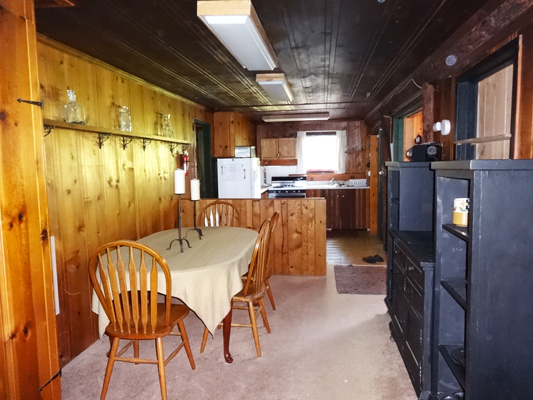
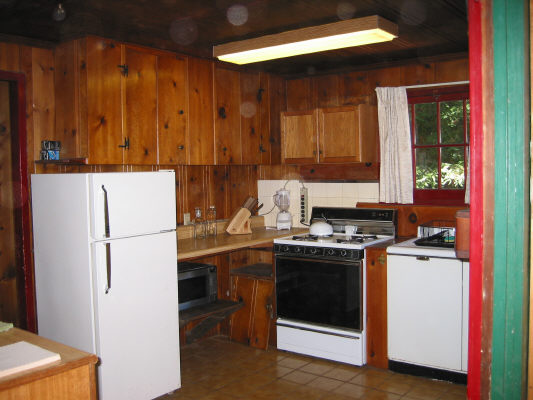
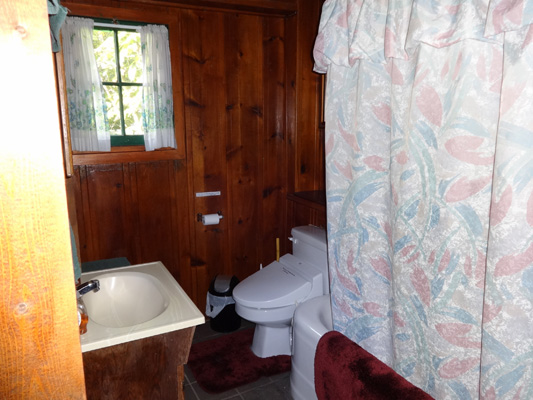
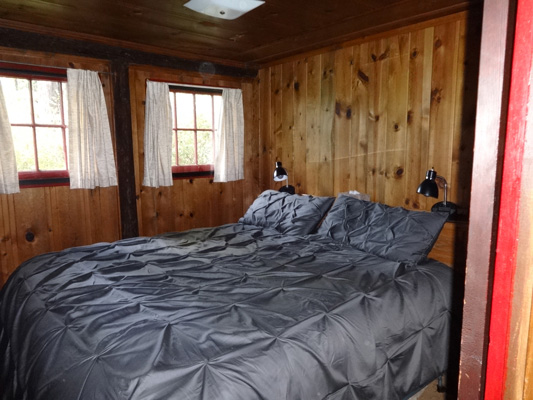

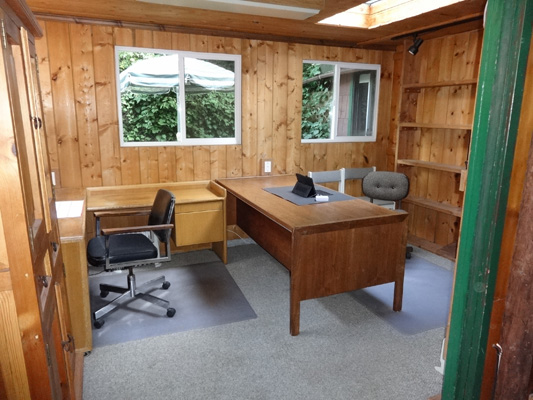
Following are current "home-made" video walkthroughs of the inside and outside of the cottage ...
QUESTIONS OFTEN ASKED -- "Mouse" over the question of interest. For closer look, move horizontally (straight!) to the right, then down into the white text box ...
CORONAVIRUS UPDATE -- Since Spring of 2020 the "Coronavirus epidemic" has led to considerable changes in the way that rental housing is handled, where intensive disinfection procedures have become necessary between the regular rotation of tenants. It has been our practice in the past to try and ensure a smooth transition between tenants by doing a thorough housecleaning. This procedure now also includes a wiping-down of all smooth horizontal surfaces, using a bleach-based solution (CDC recommended). In addition, we allow for a 72-hour period of "no occupancy" between successive tenants, which (according to a study published in the New England Journal of Medicine) should be sufficient for the Coronavirus to become virtually undetectable, even on smooth surfaces (arguable perhaps, but see CV ). As Monica Gandhi,MD points out in her book "Endemic, a Post-Pandemic Playbook" -- "As for eradicable viruses in recorded human history, only smallpox has reached this status. The features of SARS-CoV-2 make it non-eradicable." We realize that this is an "evolving situation" and, if prospective tenants have their own approach to this problem, we will be happy to discuss it with them. Also please notice that, due to the current Covid19 situation, we ask our tenants to respect the neighborhood and to exercise discretion in receiving guests, i.e., this is presently not a situation for tenants who like to entertain frequently or in numbers.
Over the years our experience has been that the cottage works best for no more than two individuals. An overriding consideration is the capacity of the septic/drainfield system, which accommodates one or two people without problems (the multiplicity of redwood trees in close proximity poses an unusual challenge to septic/drainfield technology!). Although we understandably encounter frequent objections to this limit, our almost 40 years of experience (along with observing the experiences of other neighbors on the street) have led us to accept the reality of this situation.
No, for two reasons: 1) Damage done to the house interior most often occurs during the moving-in/out process 2) Due to the proximity to Stanford and Silicon Valley, we offer a 'niche' service to people who are looking for a flexible short-term situation (month-to-month furnished), as opposed to a long-term situation (such as a lease or unfurnished, which we are not able to offer). The only rental option we offer is furnished, month-to-month with owner-paid utilities and 30-day notice from either side. For a list of included furnishings, see PDF Inventory below.
Short-term to medium-term on a month-to-month basis. Shorter-term tenants are frequently uncertain as to the length of time they will be needing housing, and the month-to-month arrangement works well for them. We are flexible with time extensions as long as it is on a month-to-month basis.
No. In the past we have found that an "open house" is not very helpful because many of our tenants come from out-of-town or out-of-state. At the present time (due to the still ongoing Coronavirus situation) the initial showing of the cottage is done through the comprehensive "description/photos/videos/questions" posted on this site. For those who are interested in a follow-up we can arrange a "mask and gloves" drop-in visit, i.e., we continue to treat Coronavirus as being an on-going, open-ended situation .
No. Leases are essentially a means of guaranteeing a fixed rent for a given period of time. However, the dynamic nature of the Silicon Valley area frequently leads to tenants' asking to break(!) leases, so our approach is that we normally try to avoid changes in rent while tenants are living in the cottage, but make any such adjustments between tenants. We feel this acts to mitigate the financial insecurity of not having a lease. The only rental option we offer is furnished, month-to-month with owner-paid utilities and 30-day notice from either side.
INTERNET PROVIDERS/SPEED/AVAILABILITY -- Out of a dozen or so companies currently active in the SF Bay Area the only provider of wired Internet to the Skylonda area is Comcast/Xfinity, which offers download speeds of up to 1 Ghz. In our experience the problem that can (and frequently does) arise in the SF Bay Area concerns not so much the "speed" of the service, but rather the "availability" of the Comcast/Xfinity connection itself (partially due to the proliferation of Internet-dependent companies and users in Silicon Valley, but also exacerbated by the (still ongoing!) Coronavirus-related school and business tele-conferencing activities). In order to circumvent this problem to as great an extent as possible, we have contracted for a so-called "Comcast Business Internet" service (medium-speed tier of 160Mbps/40Mbps down/up) which focuses more on "availability" (prioritization) than on "speed" (usually specified as the peak bits/second available at any given time). Please note that the subscribed-to Internet service has a peak download rate of 90Mbps -- a rate which is more than adequate for virtually all normal Internet activities -- with the particular exception of gaming -- an activity we do not claim to support! (NB -- The Comcast Business Internet service is a separate entity from the more familiar Comcast/Xfinity Residential Internet service, a group with which we currently have no contractual connection.)
"ZOOM" STYLE ACTIVITIES -- The bandwidth requirements for "remote conferencing" (typified by the ZOOM provider) are surprisingly modest (see summary in chart below) and are only slightly dependent on the number of participants involved in the conference (each video image is constructed from images gathered and compiled by a central server, so that each connected "user" is required to connect only with the server, not to and from a proliferation of other participants!). A "ballpark" sampling of data rates for various HQ-quality video services looks something as follows:
VIDEO CHAT APPLICATION UPLOAD (TYP) DOWNLOAD (TYP)
Zoom (one-on-one calling) .6 Mbps .6 Mbps
Zoom (group calling) 1.0 Mbps 3.0 Mbps
Google Hangouts/Meet 3.2 Mbps 3.2 Mbps
Slack .6 Mbps 2.0 Mbps
Skype .2 Mbps .5 Kbps - 8 Mbps
Skylonda Drive is a short, single-lane, rural road with pull-offs to accommodate traffic, and with on-street parking which varies in nature from house to house. Because our own house is directly next door to 131, there are actually two on-street, well-recessed parking spots available to tenants -- one in front of the (normally unused) vehicle gate to each of the two houses, and each of which is capable of accommodating a single compact vehicle. Trucks, vans, utility vehicles, SUVs, and large passenger vehicles are not practical and would present a real problem to neighbors.
In the past we had tried to provide off-street parking places inside the yard, but this eventually proved to be too much weight for the underground galvanized water pipes in the yard -- all of which we have had to replace (a process we do not wish to repeat in the immediate future). A bit of very local history! -- In 1945 the then-owners of 131 Skylonda built a workroom which awkwardly straddled the property line between 127 and 131 Skylonda! Over the years this would occasionally lead to conflicts, which were resolved in 1983 when the owners of 127 acquired 131, essentially combining the two adjacent properties. Since that time (1983) the house and yard (but not the overlapping workroom) at 131 have served as a separate monthly-renewable rental.
There is no "bulk" storage space whatsoever for furniture or other large items. Because the cottage is completely furnished, it works best for people who arrive with suitcases, laptops, groceries, etc., but not bulky household items. There is, however, covered space available in the "Witch's Hut" shed for light outdoor items such as bicycles and camping gear.
There is, in fact, a very sunny, flat area suitable for growing flowers and vegetables, and some of our longer-term tenants have in the past taken advantage of that area (growing tomatoes, greens, flowers, etc). A picture of this area is shown above in the area labeled "Front (pre-drought!)," although due to drought conditions in California during the past few years we have had to give up on the grass!
"Skylonda Corners" lies directly behind Stanford University at an elevation of about 1500'. Access is via State Highway 84, also known as La Honda Road, which is a direct extension of Woodside Road and which winds gently for about 3 miles as it rises from the valley floor to the ridge. Because Woodside Road runs directly through the town of Woodside, much of its lower (flatter) part has a well-patrolled 25-mph speed limit, and many drivers prefer to take a short connector (Portola Road) from the bottom of the hill over to Sand Hill Road (35-mph speed limit), which runs all the way to El Camino Real (about a 20-minute drive from Skylonda), passing over Interstate Highway 280 (about a 15-minute drive from Skylonda), past SLAC and Stanford, and connecting most easily to Santa Cruz Avenue in downtown Menlo Park and University Drive in Palo Alto (both about 25-minute drives from Skylonda). Interstate 280 connects to both San Francisco to the north (about an hour's drive from Skylonda) and San Jose to the south (about a 50-minute drive from Skylonda). Driving time to San Francisco Airport from us is about 45 minutes and to San Jose Airport about 50 minutes, although these times can lengthen considerably during commute hours. In particular, points further south than State Route 85 are not recommended as practical commute destinations due to congestion in the Silicon Valley area. Similarly, points farther north than roughly San Mateo can become very congested as traffic becomes more dense going into and out of San Francisco, depending on the proximity to weekday peak commute times. (CalTrain does provide a useful commute service from Menlo Park and Palo Alto for those whose destinations in San Francisco and Silicon Valley are close to the various stations). People occasionally inquire about commuting by bicycle to Palo Alto or the Stanford campus -- although Highway 84 up to Skyline Boulevard is a very popular cycling destination on weekends (or even a lunchtime ride for small cycling groups -- a time when traffic is light), it is not really practical for bicycle commuting, both due to normal automobile commuting traffic in the early mornings and late afternoons, as well as to winter-time wet weather (during non-drought periods!).
The name "Skylonda" is a contraction of the two words Skyline (referring to Skyline Boulevard) and La Honda (referring to the small community further down toward the coast). "Skylonda Corners" consists of a fire station, a reservoir, and several small businesses -- basically two gas stations, a restaurant ("Alice's Restaurant" -- a popular Peninsula "spot"), a store+deli, and an event center -- at the intersection of Highways 35 (Skyline Boulevard) and 84 (La Honda Road, an extension of Woodside Road). Approximately 160 families live on small streets in the neighborhood of the junction and are served by the Skylonda Mutual Water Company, which was started in the early 1930s, allowing for the Skylonda community to become established. Water is always an issue in California, and, because SMWC historically issued a fixed number of roughly 160 shares (water meter connections), further development in the immediate areas is limited, although a larger, more up-scale development, Skywood, lies directly adjacent to Skylonda and since 2009 has been served by California Water Service Company's Bear Gulch district (replacing the now-defunct Skyline Water District, a transition that SMWC is also currently undergoing). Much of the general area serves as a bedroom community for Stanford and Silicon Valley. At 1500' and surrounded by redwood trees, Skylonda has the advantage of lying above much of the smog from the valley, as well as being surrounded by extensive public open-space preserves suitable for walking, jogging, hiking, horseback-riding, trail-biking, and simply enjoying the extended ridge views of the San Francisco Bay and Pacific ocean.
Dogs have free run of the house and yard, which is completely fenced (provided the dog is not too small and could wiggle under the gate -- a chihuahua or pug, for instance). There is also a "doggy door" which is part of the sliding glass door that leads to the patio, which most dogs learn to negotiate fairly quickly so they can go in and out of the house freely. We do ask that dogs be reasonably quiet, especially if the owners are gone all day. Even though the surrounding area is rural, Skylonda Drive itself has many houses on it, and barking dogs are definitely a problem, just as in any neighborhood. Locking dogs in the house during absences to reduce barking noise works for some older dogs, but usually not for younger ones -- being left for long periods by themselves tends to make them anxious and prone to scratching the carpet or furniture in an effort to get out! There is also a large outside dog run adjacent to the "Witch's Hut" shed (see picture and/or video). The shed itself serves as a shelter for dogs during rainy weather. Up to 2 dogs are OK as long as they are friendly and do not bark excessively. The neighborhood, although rural, is of a residential nature with a number of small children, and loud or aggressive dogs can create a problem. For guidelines, see Guidelines
From our perspective, cats work best when they spend time both inside and outside. However, we have had many tenants with indoor-only cats, which works if they are trained not to scratch either hard or soft furniture. Having outdoor-only cats usually leads to animals which become somewhat feral, tending to fight with other cats in the neighborhood. The doggy door is probably too heavy for most cats to be able to use, so cat owners need to schedule indoor/outdoor time for pets in their own way. We ourselves are both dog- and cat-owners and are open to discussion in any individual situation. For guidelines, see Guidelines
Skylonda lies at approximately 1500' elevation and, as such, does not have access to municipal wastewater disposal facilities, i.e., sewer systems. All houses in the Skylonda area (and rural areas in general) have some sort of combined "septic tank + drainfield" arrangement to dispose of household wastewater. This arrangement is largely unnoticed by tenants, as long as care is taken 1) not to dump non-biodegradable matter into the toilet or sink drains (impermeable paper towels, for instance), and 2) not to saturate the drainfields with large amounts of water at one time (by several people taking long showers in a row, for instance). In order to avoid problems in this area we have found (as a result of almost 40 years of expensive experience!) that it works best to limit the number of residents to a total of two individuals (at most, two adults and one small child). For more information, see Guidelines
The process of turning utilities on and off between consecutive short-term tenants can be both difficult and time-consuming, frequently involving providing references from former utility providers, as well as requiring substantial deposits. In addition, if tenants vacate the property without settling their utility bills, it makes it very difficult for the follow-on tenants to have the service(s) turned back on. For these reasons, we include all normal basic utilities (including an Internet-based telephone service) as a part of the monthly rent, which is normally held fixed during the term of tenants' stay as long as utility usage stays reasonable. Utilities we provide as part of the rent include propane (Amerigas -- wall heaters and on-demand hot water), electricity (PGandE -- appliances and induction burners for cooking), water (SMWC from Crystal Springs reservoir, sourced by Hetch Hetchy and SF Peninsula runoff), waste disposal (GreenWaste -- weekly garbage disposal and recycling), and Internet ( Comcast "Business" Internet Service -- prioritized Internet access at 30 Mhz up and 90 Mhz down). Because of the redwood trees in the neighborhood, broadcast TV reception from the valley is generally poor, although a comprehensive set of streaming services is available via the Internet-based Roku service we provide. Please note that (for environmental reasons) cold water only is available for use in the clothes washer in the "Witch's Hut" -- something that other tenants have found to their surprise can reduce wrinkles, shrinking, and fading (in addition to energy savings, the used water is stored in tanks and used for plant irrigation). For similar reasons we do not provide a dish washer, and we request that tenants use the double sink in the kitchen for all dish-washing needs. In the past we have tried to give estimates of actual usage of the various utilities, but because of tenant usage variation and pricing volatility (both seasonal and long-term) we no longer find this to be practical. We have found (from long years of experience!) that the most practical approach (both for our tenants and for ourselves) is to simply include in the rent a fixed sum of $400 for furnishings, gas, electricity, water, recycling/garbage pickup, Comcast Business Internet, and yard maintenance. NB -- This sum corresponds to the lower end of normal household consumption in this area, and we respectfully ask that all tenants exercise reasonable care in their utility usage.
By smoking, we refer to cigarette/cigar/marijuana smoking, vaping, and other similar usages. This is a sensitive issue both for ourselves and for tenants, and, since we have struggled with it in the past, we will try to answer it in detail.
OUR EXPERIENCE -- We are frequently asked by prospective non-smoking tenants if the house is maintained as a "non-smoking" property, and, because we ourselves are lifelong non-smokers, we would like to be able to honestly answer 'yes' to that question. We have, in fact, occasionally experienced problems with compliance in the past, and we have found these problems very expensive to remedy after tenants have moved out. If tenants do, in fact, smoke even after having signed our Rental Agreement (which specifically prohibits it), it creates real problems both for ourselves and for potential follow-on renters who may have allergic reactions to cigarette smoke. Smokers will occasionally point out to us that "cigarette smoke allergy" is not considered to be a true "allergy" but only a "sensitivity," as the smoke is an "irritant" rather than an "allergen." However, people with other allergies tend to be more sensitive to cigarette smoke, and a person can indeed experience an adverse reaction when exposed to direct cigarette smoke, as well as to second-hand smoke, and even to rugs and furniture that have absorbed such smoke (both directly and from the clothes of those who have been smoking, perhaps outside on the patio or elsewhere in the yard). These are facts we have become aware of from many years of painful experience with people who have such sensitivities and who understandably tend to insist we are legally responsible for assuring the environment is, in fact, smoke-free if we claim it to be so!)
LEGALITY -- Laws regulating smoking actually tend more in the direction of obligating owners to enforce existing bans, rather than limiting owners' ability to impose such bans. California state laws (passed since about 1995) tend to focus on smoking in public places, work places, and multi-unit housing. California city laws, in contrast, generally allow landlords to regulate smoking in single-unit housing at will. In our particular case, we are regulated by laws passed by the Board of Supervisors of San Mateo County (although the city of Woodside is our closest post office, we are not actually inside the city limits). The County of San Mateo recently (2014) passed an ordinance outlawing smoking inside and around multiple-unit buildings with one or more shared ceilings, floors, walls or ventilation systems, and this ban reflects the prevailing attitude of the County Board of Supervisors regarding smoking. AS FAR AS SINGLE-UNIT DWELLINGS ARE CONCERNED, TO OUR KNOWLEDGE THE COUNTY OF SAN MATEO CURRENTLY HAS NO ORDINANCES RESTRICTING THE ABILITY OF OWNERS OF SINGLE-UNIT RENTAL HOUSING TO REGULATE SMOKING EITHER INSIDE A HOUSE OR ON THE SURROUNDING PROPERTY GROUNDS.
For further information -- E-Mail: cottage@skylondaworks.com Landline: 650-851-0174 (Please leave message)